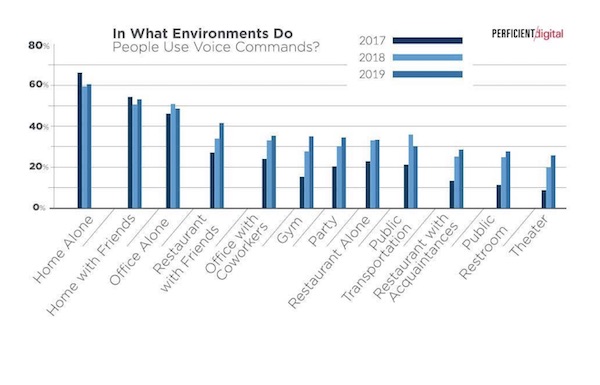Consumers Becoming More Comfortable Using Voice Commands in Public, Especially Men
New survey data from Perficient Digital’s Stone Temple group suggests that consumers are becoming more comfortable using voice commands in public. The survey of 1,719 U.S. consumers found that the most common use of voice commands was in the “Home Alone,” followed by “Home with Friends” and in the “Office Alone.” Over 60% said “Home Alone” while the next two were both just above and below 50% respectively. These are personal spaces or private use scenarios. However, fourth place at over 40% was “Restaurant with Friends.” Not only is this a very public use of voice commands, the figure has risen from about 25% in just two years.
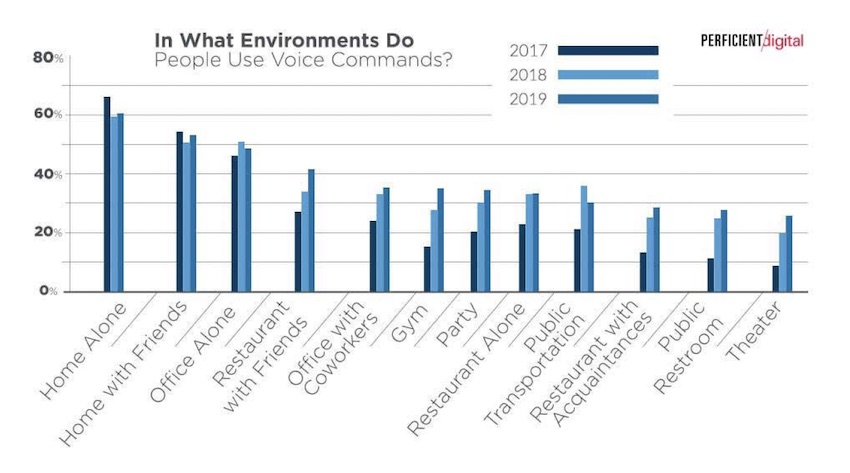
Restaurants were followed by “Office with Coworkers”, the “Gym” and at a “Party” which all rose from 2017 and 2018 responses. Maybe the more intriguing findings were the rise of voice command use in public restrooms and the theater. More than 25% of consumers said they now use voice commands in both locales. That result speaks to a growing comfort level with the use of voice assistants in public settings where strangers can overhear your interaction and it also may be a sign of the decline in social courtesy.
How do others react when they hear someone using voice commands in public? Forty-six percent say they are annoyed and 25% are not concerned. Mores may be changing around use of voice assistants in public, but not everyone is thrilled about it.
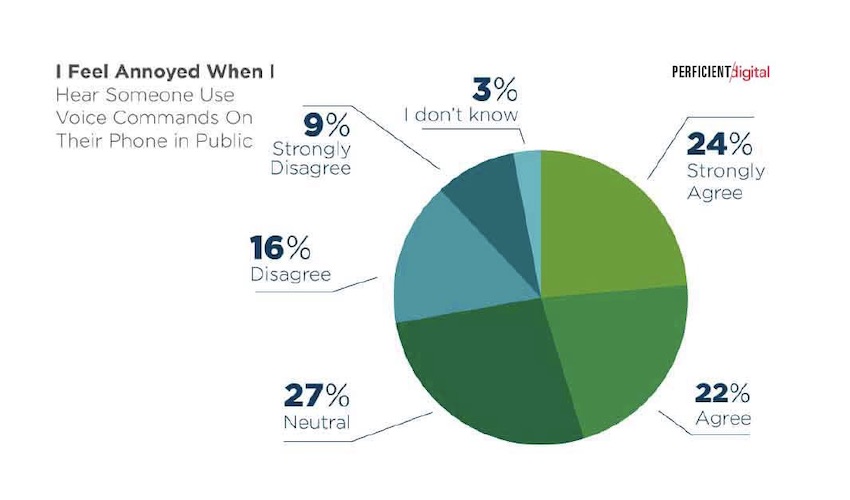
Men More Comfortable Using Voice in Public Spaces
The data also provide evidence that women are perhaps more attuned to social courtesy or more protective of personal privacy. Overall, men were 1.54 more likely to use voice commands than women according to the survey. However, this gap is even wider when it comes to public spaces. Woman and men are about as likely to use voice commands while at “Home Alone,” but are about half as likely as men to do so in public spaces such as the gym, on public transportation, or in a public restroom. The contrast is even greater in the theater where women are about one-third as likely as men to use voice commands.
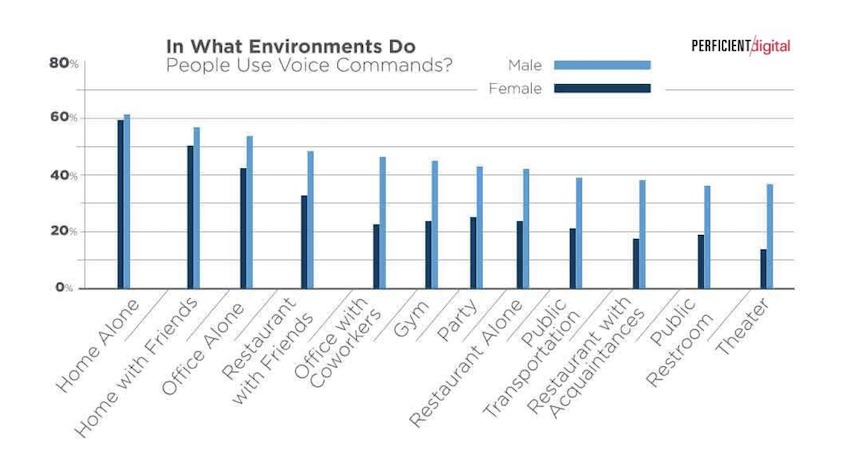
Other results show that Midwesterners are the least likely to use voice commands in public, married people are more likely to voice in all scenarios, upper-income consumers are more likely to be voice users, and 25-34 year-olds are the most active users while the over 45 demographic is the least active. In private spaces or environments with friends, education level doesn’t have much impact. However, in public spaces, consumers with postgraduate education are far more likely to use voice commands. Overall, the findings support the notion that voice is becoming more popular and consumer self-consciousness about voice interactions being overheard is declining.
One other interesting note. Top income earners are far more likely to use voice commands in public and are far more likely to be annoyed by it. That sounds about right.
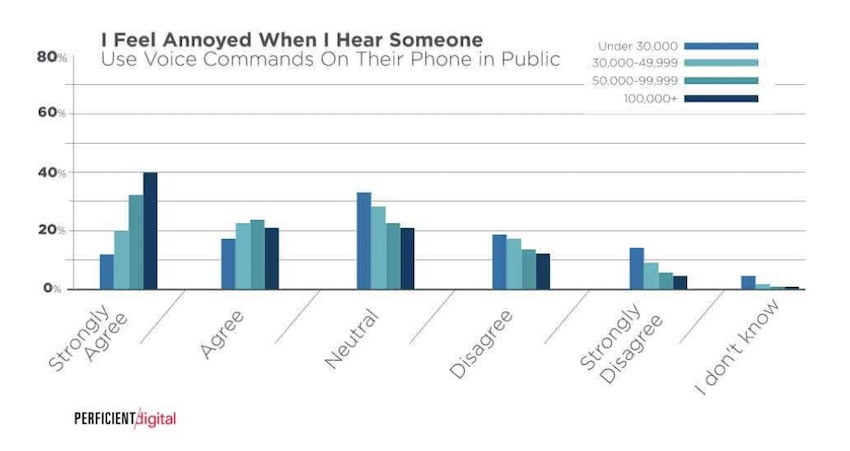
You can read more about the survey findings for this and other topics here.
Follow @bretkinsella Follow @voicebotai
Google Assistant is Still the Smartest Voice Assistant According to New Study
Voice SEO Explained by Stone Temple CEO Eric Enge – Voicebot Podcast Ep 44


